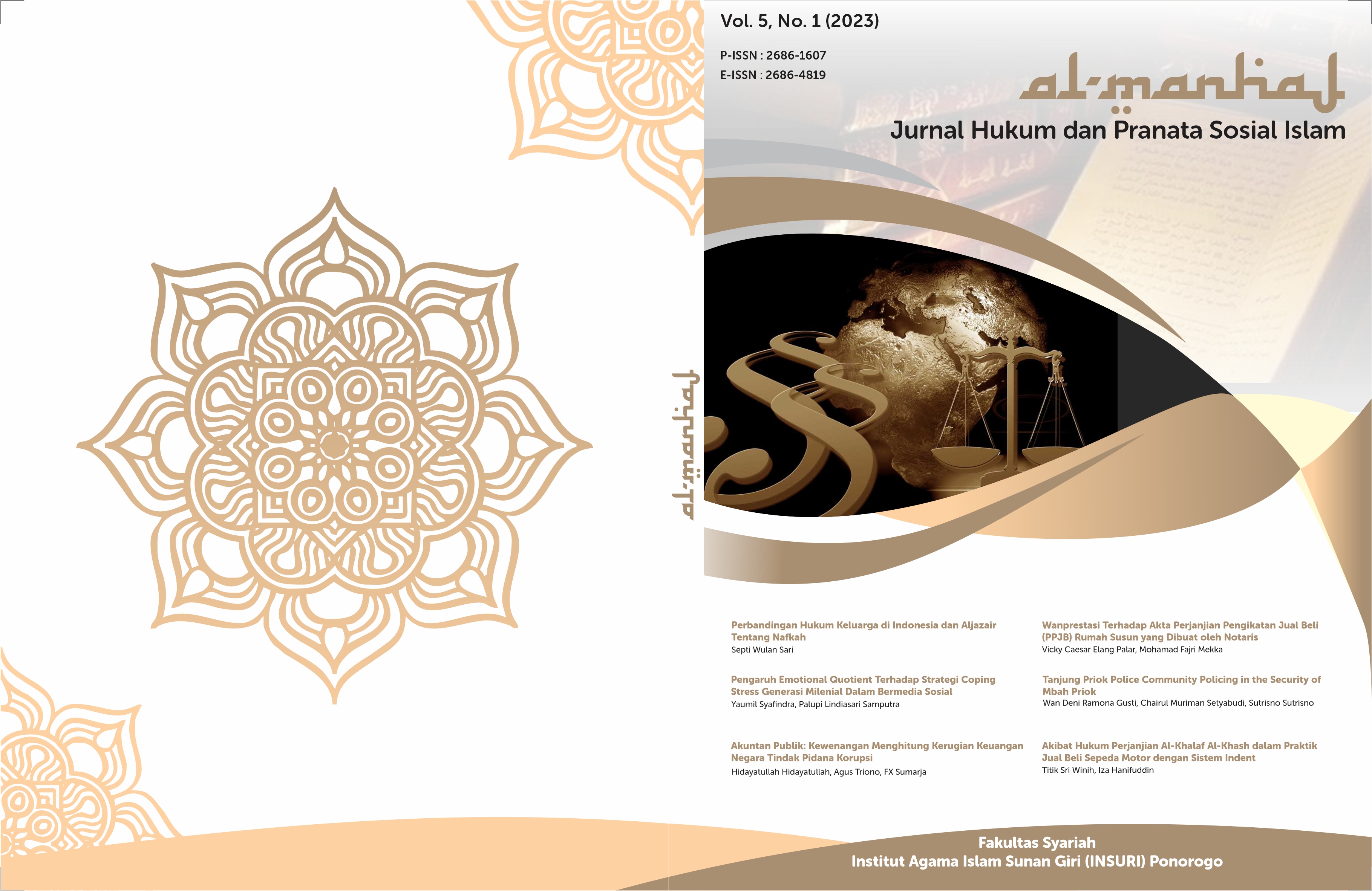Boundary of Istimta' For Husband Against Menstruating Wife (Comparative Study of Imam Malik and Imam As Syafi'i)
DOI:
https://doi.org/10.37680/almanhaj.v5i1.3117Keywords:
limits., istimta', menstruationAbstract
This research examines the "Istimta' Limits' For Husbands Toward Wife Who Has Menstruation. In more detail, it discusses ISTIMTA'. is a law that is prescribed for a couple so that there is no more opportunity for the husband to commit adultery even though the wife is menstruating, therefore there is a limit of istimta' for the husband towards the wife who is menstruating so that it is more build good family relationships.Opportunities for adultery for husbands are very few because the majority of scholars allow istimta' but differ in opinion as to what istimta' (having fun) with a menstruating wife can be chosen by the husband taking into account the procedures and procedures in accordance with Islamic law. There are several laws that the scholars are not united and have different opinions, in particular regarding the concept of istimta limits.This research is about to examine the opinion of two madhhab priests, namely Imam as Syafi'i and Imam Al Maliki.The problem being investigated is how the views of imam as Syafi'i and imam maliki on the concept of istimta' law on menstruating women. This study aims to analyze the views of two priests of the madhhab, namely Imam As Syafi'i and Imam Al Maliki regarding the limit of istimta' for husbands towards wives who are menstruating. This research is research that uses a normative approach with a qualitative descriptive method, ie describes the views of two madhhab priests, namely imam as Syafi'i and imam Al Maliki. Research results obtained from the discussion of this study, namely that if a wife is menstruating there is a limit for the husband to be istimta' with said wife, so when a husband ignores the istimta' limits for a husband towards a wife who is menstruating which is permissible then the law is haram. So it is important to explain in this related thesis.
References
Yusuf Al-Qordhowi, fikih wanita (Bandung: Penerbit Jabal, 2009), hlm. 59.
Wahbah Az-Zuhaili, Fiqih Islam Wa Adilatuhu 1, Budi Permadi Cet.1, (Jakarta: Gema Insani, 2010).
Kementerian Agama RI, Qur’an dan Terjamahnya (Bandung: CV Mikhraj Khazanah Ilmu 2010), hlm.35.
Himatu Rosana, Ibadah Penuh Berkah Ketika Haid dan Nifas( Jakarta: Lembar Langit, 2015), hlm. 7.
Nonon Saribanon et al, Haid Dan Kesehatan Menurut Ajaran Islam (Jakarta: Sekolah Pancasarjana Universitas Nasional, 2016), hlm.16.
M.Ali Ash-Shabuni (penterjemah: Saleh Mahfoed), Tafsir Ayat-ayat Hukum dalam Alquran, Jilid 1, (Kuala Lumpur: pustaka Al-azhar), h.518.
A. Qadir Hassan, Ilmu Mustalah Hadis, cet. 3 h.259
N. Alim Asep Saifullah dkk, Almuatta’ Imam Malik ( Jakarta: Pustaka Azzam 2006), hlm. 77
M. Yasir, Abdul Mutholib, Mukhtasar Kitab Al Ulum Imam Syafii Abu Abdullah Muhammad bin Idris (Jakarta: Pustaka Azzam 2006), hlm. 242
https://www.nu.or.id/post/read/92124/sanksi-hubungan-badan-saat-istri-haidatau-nifas, (tanggal 15 Agustus 2018
Downloads
Published
How to Cite
Issue
Section
License
Copyright:
- Author retains the copyright and grants the journal the right of first publication of the work simultaneously licensed under a Creative Commons Attribution 4.0 International License that allows others to share the work with an acknowledgment of the work's authorship and initial publication in this journal.
- Author is able to enter into separate, additional contractual arrangements for the non-exclusive distribution of the journal's published version of the work (e.g., post it to an institutional repository or publish it in a book) with the acknowledgment of its initial publication in this journal.
- Author is permitted and encouraged to post his/her work online (e.g., in institutional repositories or on their website) prior to and during the submission process, as it can lead to productive exchanges, as well as earlier and greater citation of the published work (See The Effect of Open Access).
License:
-
Attribution — You must give appropriate credit, provide a link to the license, and indicate if changes were made. You may do so in any reasonable manner, but not in any way that suggests the licensor endorses you or your use.
-
No additional restrictions — You may not apply legal terms or technological measures that legally restrict others from doing anything the license permits.
You are free to:
- Share — copy and redistribute the material in any medium or format
- Adapt — remix, transform, and build upon the material for any purpose, even commercially.

This work is licensed under a Creative Commons Attribution 4.0 International License.














